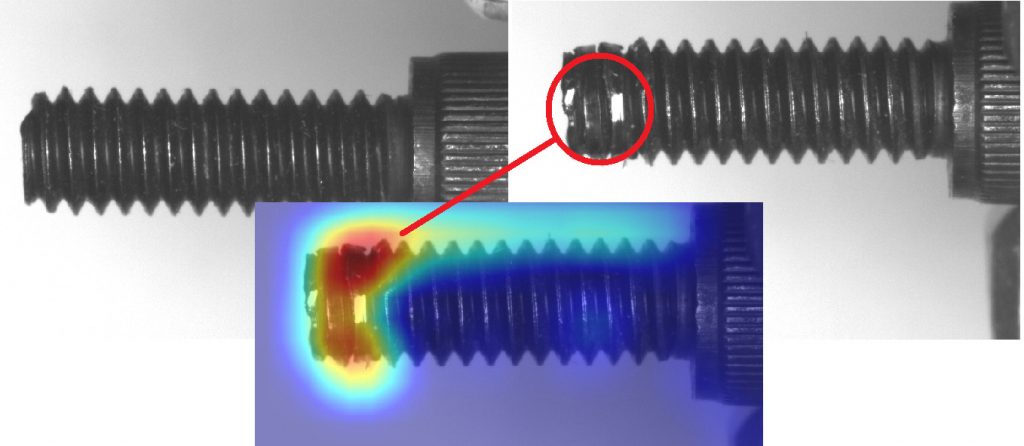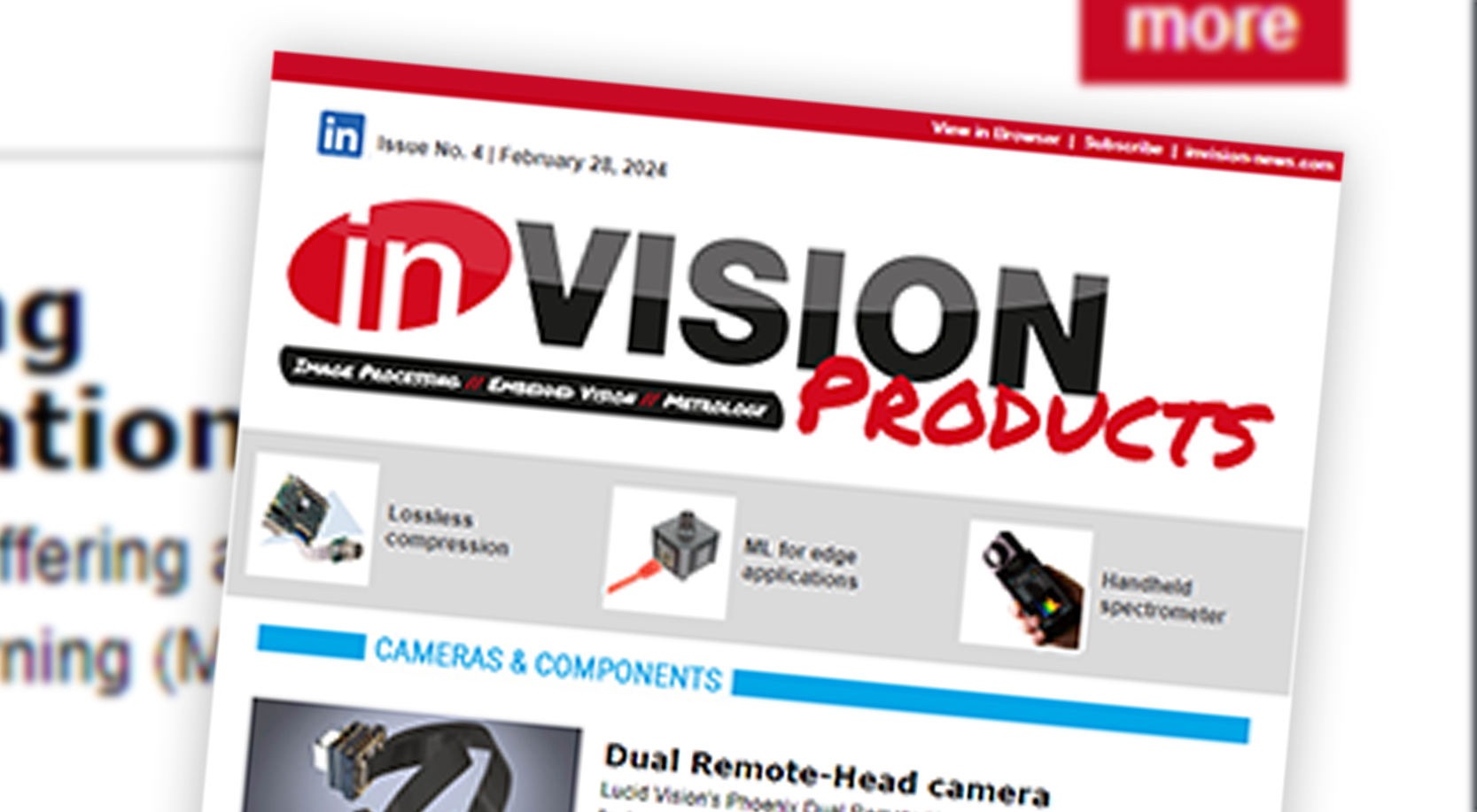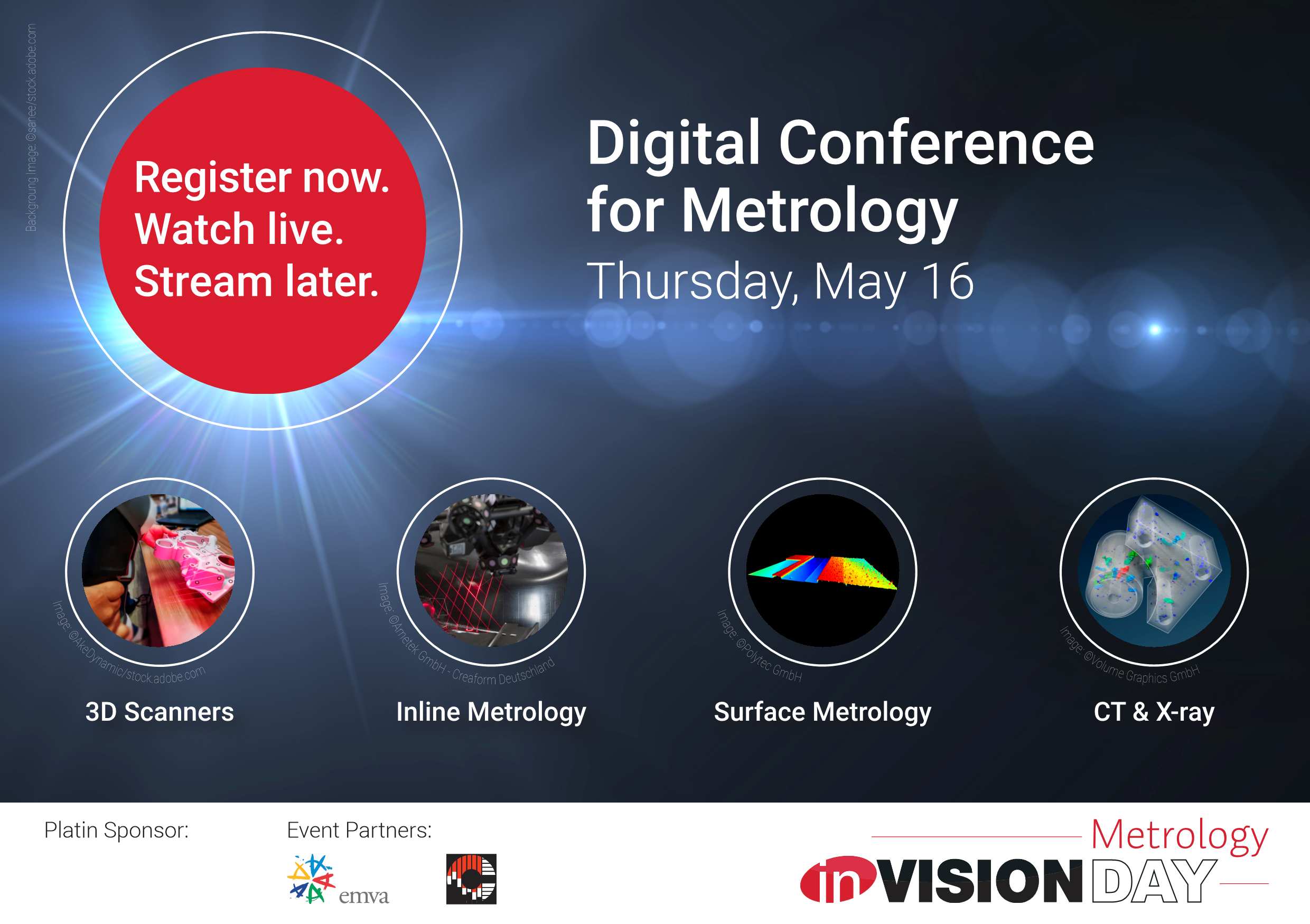
Image 2 | Inspection of Screws: left: perfect screw; right: bad screw with damaged section encircled. Bottom: heatmap output of a classification algorithm showing the defect (Bild: Teledyne Dalsa)
Simple Classification
Despite the advantage of deep learning over traditional image processing techniques, challenges do exist. First, many users lack the understanding of what is required to achieve success with deep learning. Second, until recently, deep learning required a huge data set to train a system. Many applications have not been able to take advantage of deep learning due to the lack of high quality, manually classified images. In the case where a large data set is available, the next challenge is to label each image. This labeling can be a daunting task because it has to be done by an expert and needs to be error-free. The cases where there is a large number of classes (different groups with a unique label for each) become prone to errors. Subtle labeling errors are one reason for failure to reach satisfactory performance from AI tools. It is painful to realize the amount of wasted time involved before realizing that the failure is due to bad labeling in the original data set. The fact is that a proper data set is the most important item in a particular system and is usually treated as proprietary IP by the user. Typical deep learning applications require hundreds or even thousands of image samples. In more challenging or custom applications, the training model may require up to a million or more image samples. Even if you can get enough images, you have to ensure you have the right mix of good and bad images to meet the parameters of the training model. To achieve the expected results from the training model, you need a balanced data set. This type of training that uses both good and bad examples is called defect detection and is considered a simple classifier. To verify if the training model is accurate, you need to test the model with a new set of images. If the model achieves close to the training set model, it is said that the model generalized well. In the case where the model does poorly on the test set, this tends to reflect that the model remembers all training cases and has not learned what makes an image good or bad and is known as overtraining or overfitting. If the test set does better, then the training set is suspicious (perhaps due to a poor distribution), or the test set is too small. This method is called supervised learning.
Anomaly Detection
Some applications may only have good examples. In many production environments, we see what is acceptable but can never be sure of all possible cases which could cause rejects. There are cases where there is a continuous event of unique new rejects that can occur at very low rates but are still not acceptable. These types of applications could not deploy deep learning effectively due to the lack of bad examples. That is no longer true. New tools have enabled manufacturers to expand the applications that benefit from deep learning. There is a new technique for classification called anomaly detection, where only good examples train a network. In this case, the network recognizes what is considered normal and identifies anything outside that data set as abnormal. If you were to put the good example data set on a graph, it would look like a blob. Anything that falls within the blob classifies as normal, and anything that falls outside the blob classifies as abnormal – an anomaly. Figure 1 and Figure 2 are both solvable with anomaly detection in situations where just a few or even no bad samples are available for training. Anomaly detection tools enable the expansion of deep learning into new applications that could not take advantage of its benefits previously. The inclusion of anomaly detection helps to reduce engineering efforts needed to train a system. If they have the data, non-experts in image processing can train systems while reducing costs significantly. The Astrocyte software of Teledyne Dalsa’s is a training tool based on Deep Learning that includes classification, anomaly detection, object detection, segmentation and noise reduction.












